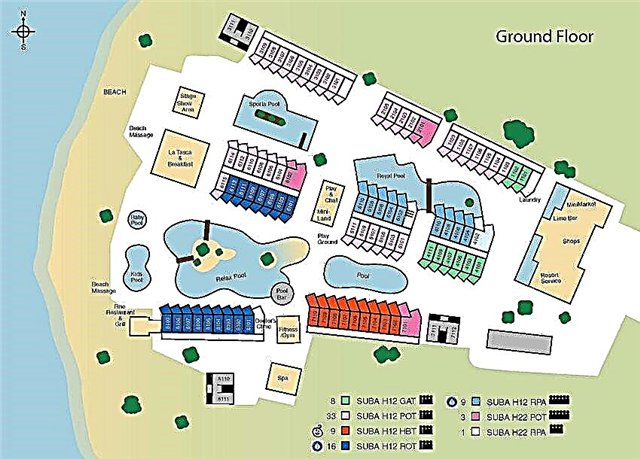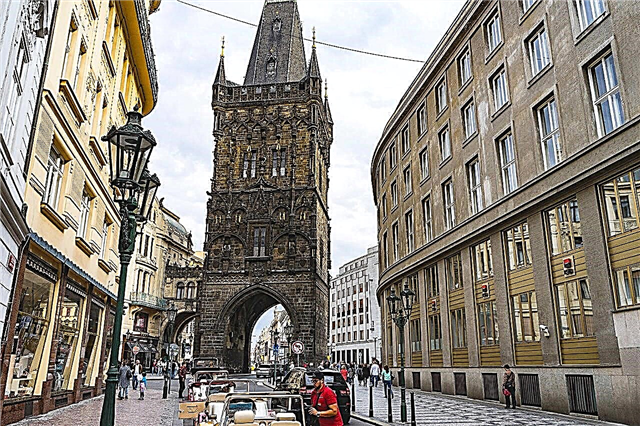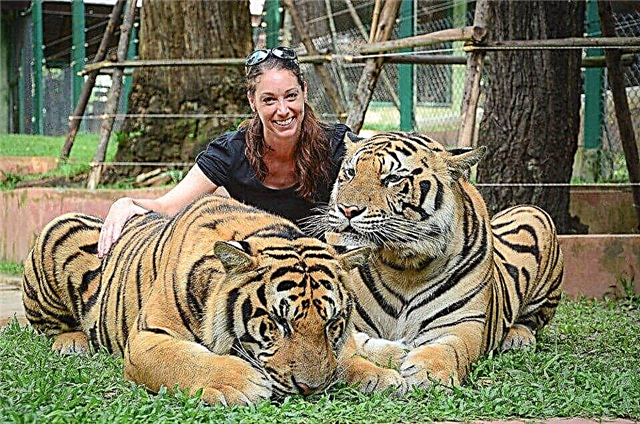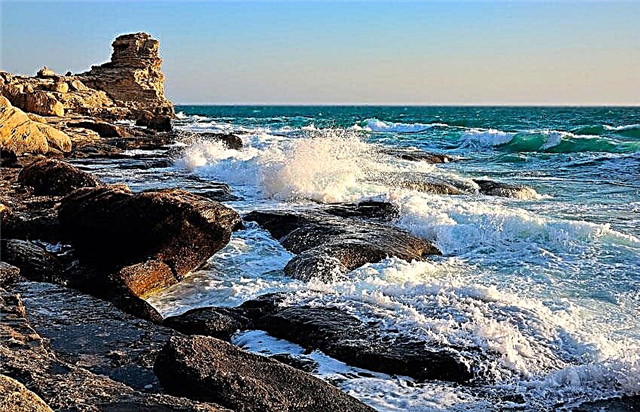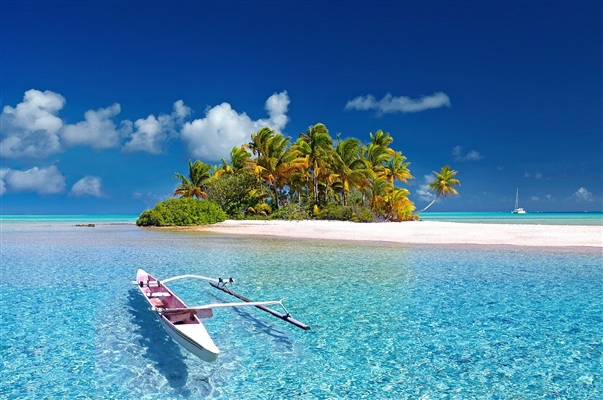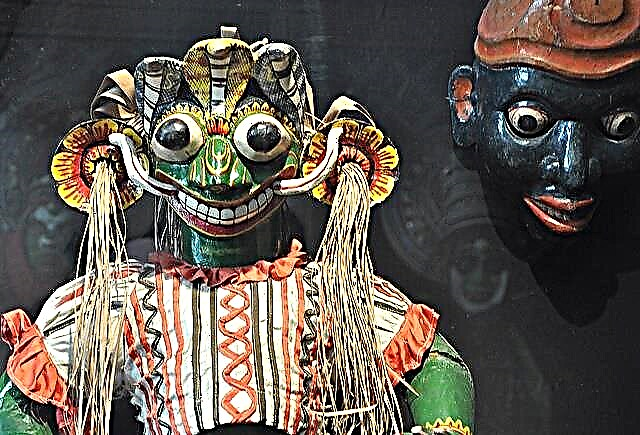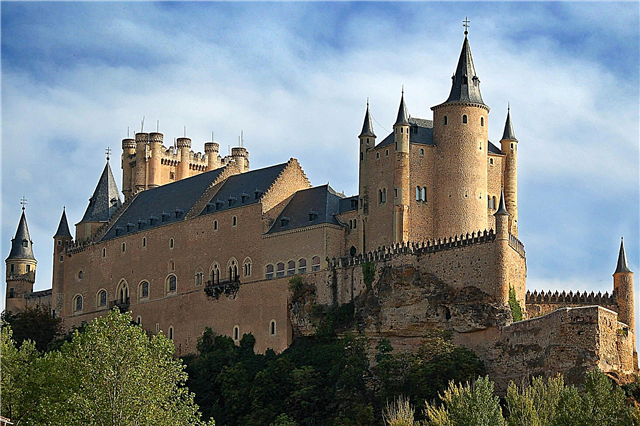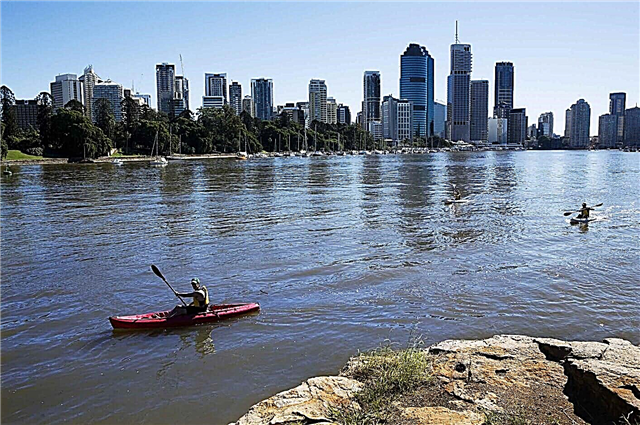There are several hundred large rivers in Australia. One of the main features of local hydrology is the absence of a clearly pronounced seasonality of spills due to low and uneven precipitation. Another characteristic feature of Australia is that many bodies of water do not flow into the ocean.
The largest rivers flow mainly in the southeast of the country. The instability of river channels is the reason for the underdevelopment of passenger and freight water transport in Australia. Rivers are often used for organizing boat trips, kayaking, canoeing, yachting.
Longest rivers in Australia
Murray
River in the south of Australia. Starts in the Australian Alps. The largest waterway on the continent. It flows into Lake Alexandrina and further into the Indian Ocean. Settlements - Alburi, Vodonga, Moama, Echuka, Mildura, etc. A system of dams and reservoirs has been built on the river. Crosses several national parks and reserves. It is famous for its inhabitants - Australian smelt, 3 species of perch, cod, clawed shrimp, short-necked turtles.
The length of the river is 2508 km.

Marrumbidgee
Located in New South Wales and the Australian Capital Territory. It flows into the Murray River. It flows through major cities - Yass, Canberra, Hay, Wagga-Wagga, Balranald. It was opened in 1823. A dam and several reservoirs have been built, with the help of which the drain is regulated. The river valley is famous for its picturesque nature. Several nature reserves have been created, hiking trails have been laid, canoeing and fishing are popular.
The length of the river is 1485 km.

Darling
Located in New South Wales. Begins at the foot of the New England Ridge. Longest tributary of the Murray. Towns - Burke, Brevarrina, Wentworth. Most of the year it is shallow, during the rainy season the water rises by 10-15 meters. A system of reservoirs has been created in the lower reaches. Deposits of copper, gold, silver have been discovered. 6 national parks have been organized. Among the attractions are ancient sites, ritual sanctuaries of the aborigines, fish traps, which are 40 thousand years old.
The length of the river is 1472 km.

Cooper Creek
Crosses Queensland and South Australia. It originates on the slope of the Varrego ridge, here the river is called Birku. Combining with the Thompson River, it becomes Cooper Creek. Localities on the River - Blackall, Isisford. During floods reaches Lake Eyre. It was first explored in 1845. It is a dry river, only fills during the rainy seasons, but the surrounding land is fertile. There are many natural pastures along the shores.
The length of the river is 1420 km.

Lachlan
Located in New South Wales. It starts 13 km from the town of Gunning. It flows into the Marrumbidgee River. Settlements - Kondobolin, Hilston, Buligal, Oxley, etc. The coastal lands have long been inhabited by aborigines - virajuri. The river is used for irrigation, a dam and reservoirs have been built on it. During the rise, the water becomes navigable. Floods are frequent. There are wetlands along the entire length, including those of national importance.
The length of the river is 1339 km.

Flinders
It is the longest river in Queensland. The source is located on the slopes of the Gregory Mountains, near the town of Kargun. It flows into the Gulf of Carpentaria in northern Australia. It has several tributaries - Stoell, Saxby, Cloncurry. It flows through the cities of Hughenden, Marathon, Richmond. It got its name in honor of M. Flinders, a British navigator. The coastal land, especially close to the bay, is used for raising sheep and cows.
The length of the river is 1004 km.

Gascoigne
Located in Western Australia. Starts at the Robinson Hills. The longest river in this state. It flows into the Indian Ocean. It has 36 tributaries. It was opened in 1839. Flash floods are observed in May-July. For most of the year, the river looks like a dry sandy channel. Gascoigne is called "the river in reverse" or "flowing upside down", as its aquifers lie below the level of the desert sands. The port city of Carnarvon is located at the mouth.
The length of the river is 978 km.

Diamantine
It flows through Queensland and South Australia. It starts north of the village of Longreach. It flows into the Goyder Lagoon, a swampy lake in the Strzelecki Desert. In high water, it spills, flows out of the swamp, joining the Georgina River, giving rise to the Warburton Creek River. The largest city on the river is Winton. The Diamantina National Park has been established in the vicinity. Livestock raising is well developed in the river basin, there are many pastures.
The length of the river is 941 km.

Ashburton
Located in Western Australia, in the Pilbara region. It flows into the Indian Ocean in the vicinity of Onslow. It has many tributaries. There is little vegetation along the banks. In dry times, it dries up completely. It was discovered in 1861 by the traveler F. Gregory. The river is rich in fish, combed crocodiles have been spotted, black swans, green heron, Australian bustard and other birds are found along the banks.
The length of the river is 825 km.

Murchison
The source is on the slope of Mount Robinson, Western Australia. It flows into the Indian Ocean in the vicinity of the city of Kalbarri - the only settlement on this river. In 1839 it was first explored and named after R. Murchison, a geologist from Scotland. Kalbarri National Park was founded near the river in 1963. During dry periods, the river dries up in many places.
The length of the river is 780 km.

Fortescue
It flows in Western Australia, in the Pilbara region. The source is at Mount Deadman Hill, 30 km from the city of Newman. It has 24 tributaries. Gregory and is named after Charles Fortescue, who financed the expedition. Passes through the Millstream Chichester National Park. Full-flowing in December-January, the rest of the time dries up. The dam was built. The coastal areas are inhabited by indigenous people - Injibandi.
The length of the river is 760 km.

Fitzroy
Located in Western Australia, in the Kimberley region. The source is in the Dyurak mountains. It flows into the Indian Ocean, King Bay. It was first explored in 1837 and named after the captain of the ship "Beagle". A dam was built near the town of Kamballin. The coastal areas are inhabited by aborigines who have lived here for at least 40 thousand years. The land is used as grazing land. In the upper reaches of the river - the city of Fitzroy Crossing, near which the Geikie Gorge National Park was created.
The length of the river is 733 km.

Berdekin
Located in the state of Queensland. It starts on the slope of the Seaview ridge, near the town of Ingham. It flows into the Coral Sea, in the area of the Apstart Bay. It flows through the settlements of Charters Towers, Home Hill, Ayr, Collinsville. The largest dam in the state has been built on the river. The main activity in the Berdekin Basin is animal husbandry and sugarcane cultivation. In the vicinity is the Girringun National Park.
The length of the river is 732 km.

Barvon
Located in New South Wales. Formed by the confluence of the Weir and McIntyre rivers, north of the city of Mungindi. It flows into the Darling River. Towns on the river - Collarenebri, Walgett, Brewarrina. It was first explored in 1846. The history and culture of the local aborigines is closely connected with the river. Ancient stone fish traps have been preserved. Due to their uniqueness, they are included in the list of Australia's national heritage.
The length of the river is 700 km.

La Condamine
Located in the state of Queensland. Starts on Mount Superbus. Localities on the river - Killarney, Warwick, Chinchilla, Surat. It was opened in 1827. The water is used to irrigate coastal lands. Several dams have been built on the river. Large-scale floods occur. During a drought, Condamine turns into a chain of drying up bodies of water. Natural gas is being produced on the coast near the town of Chinchilla.
The length of the river is 657 km.

Goulburn
Located in Victoria. Longest river in the state. The source is in the Victorian Alps. It flows into the Murray River near the town of Echuca.It has 41 inflows. Settlements on the river - Alexandra, Seymour, Murchison, Nagambi, Arcadia Downs, etc. It was opened in 1824. Lower Goulburn National Park was established in 2010 to protect unique coastal forests that are more than 500 years old. Canoeing, fishing, picnics on the shore are popular.
The length of the river is 654 km.

Fink
Located in Central Australia. The source is at the McDonnell Ridge. Usually it is a chain of lakes and reservoirs, the channel is lost in the Simpson Desert. Only after heavy rains does it become full-flowing and flows into the Makumbu River. It is considered the oldest river in the world, with an approximate age of about 400 million years. It was opened in 1860. It flows through two national parks of the country - Fink Goj, West McDonnell. Colonies of migratory birds live on the shores.
The length of the river is 600 km.

Barcu
Located in Queensland. The source is on the slopes of the Varrego ridge. It joins the Thompson River and gives rise to the Cooper Creek River. Localities on the coast - Blackall, Isisford, Tambo, Retreat. It was first explored in 1845, the name was given by local aborigines. It has 4 tributaries. The Isisford Dam was built on the river. Welford National Park is located in the vicinity. The river is inhabited by Australian endemics - the perches of the Barku River.
The length of the river is 580 km.

Victoria
It flows through the Northern Territory of Australia. The source is in a hilly area north of the town of Lajamanu. It flows into the Timor Sea. Localities - Kuliba, Victoria River Downs. It has 56 tributaries. Full-flowing from December to March, shallower during the dry period. In the vicinity is the Judebarra National Park. In the lower reaches there are valuable wetlands - the habitat of large colonies of waterfowl and migratory birds.
The length of the river is 560 km.

Castlereagh
Located in New South Wales. The source is in the Varrumbungl mountains, at an altitude of 850 meters. It flows into the Macquarie River, 65 km from Walgett. Localities - Coonabarabran, Binnaway, Menduoran, Gilgandra. It was first explored in 1818. In many areas it turns into an "inverted river", that is, water flows through vast sands under the river bed. During floods, it is a stormy stream, floods occur. Coastal lands have long been inhabited by aborigines.
The length of the river is 549 km.

Warburton
Located in South Australia. One of the largest rivers in the state. Begins in the swampy lake Laguna Goyder. It flows through several bodies of water, permanent and drying up, desert terrain and flows into the largest lake in Australia - Eyre. It has 7 tributaries. It was discovered in 1866 by the English traveler Peter Warburton and later received his name. The coastal land is mainly used as grazing land.
The length of the river is 412 km.

Swan
Located in Western Australia. It starts from the Avon River, the source is on the Darling Ridge. In the park, Walunga connects with tributaries and turns into the Swan River. It flows through the city of Nortem, Perth. Near the city, Fremantle flows into the Indian Ocean. It was opened in 1697 and got its name in honor of the black swans living here. 22 bridges have been built across the river. Cruises are popular; 15 yacht and several rowing clubs are equipped along the river.
The length of the river is 360 km.

Snowy
The source of the river is at the foot of Mount Kostsyushko, the highest in Australia, on the territory of the national park of the same name. Crosses New South Wales and Victoria. In Victoria, it flows through 2 parks - Alpine and Snowy River. It flows into the Bass Strait. Settlements on the river - Kuma, Jindabyne, Dalgeti, Orbost, Marlo. Was researched in 1839. To regulate the catchment area, several dams and reservoirs have been built on the river.
The length of the river is 352 km.

Brisbane
Located in the state of Queensland. Starts at Conondale Park. It flows into Moreton Bay. Large floods often occur in the lower reaches. Habitat of rare fish - cattle-toothed, Brisbane river cod, bull sharks. 1 underwater tunnel and 16 bridges have been built on the river. Most of them are in the city of Brisbane, at the mouth of the river. Kayaking, canoeing, and retro gondola or paddle steamer cruises are popular. There are sections of mangroves.
The length of the river is 344 km.

Ord
Located in Western Australia. The source is at the foot of Mount Wells. Localities on the river - Lake Argyle, Kununarra. It flows through the largest freshwater reservoir - Lake Argyll and Purnululu National Park. It was opened in 1879. An irrigation system, several dams and hydroelectric power stations have been built on the Horde. On the coastal lands, peanuts, sunflowers, and sugar cane are grown. River cruises and fishing are popular.
The length of the river is 320 km.

Hunter
It flows in New South Wales. Starts in the Liverpool mountains. It flows into the Tasman Sea. It was discovered in 1791, at the same time large deposits of coal were discovered. And today the city of Newcastle at the mouth of the river is among the world leaders in its export. Hunter Valley is one of Australia's most famous wine regions. There are frequent floods, a dam has been built. There are mangroves along the banks. Cities on the river - Aberdeen, Denman, Singleton, Maitland and others.
The length of the river is 300 km.

Mary
Located in the state of Queensland. It starts near the village of Burubin. Settlements on the shore - Kenilworth, Tiaro, Maryborough, Gimpy. It flows into the narrow Great Sandy Sound. First explored in 1842. It is famous for its inhabitants - ancient turtles, which have survived only in this river. There are also rare cattle-toothed lungfish, giant frogs, and crested crocodiles. A national park of the same name has been created in the vicinity of the river.
The length of the river is 291 km.

Yarra
Located in Victoria. Starts near Matlock Mountain. The mouth is in the bay of Port Philip Bay. It was opened in 1803. In the lower reaches, the second largest Australian city, Melbourne, is founded. Also on the river are the small towns of Vorburton, Yarra Junction, Warrandite. The Yarra Valley in the vicinity of Melbourne is famous for its luxurious vineyards and the best wineries in the province, as well as numerous parks and reserves.
The length of the river is 242 km.

Derwent
The source of the river is Lake St. Clair in the central part of the island of Tasmania. It flows into Storm Bay, which is connected to the Tasman Sea. Several hydroelectric power plants were built on the river, as a result of which artificial reservoirs were formed. It flows through the territory of Cradle Mountain - Lake St. Clair, a World Heritage Site. The river is rich in fish, about a hundred species of birds live here, dolphins, seals, and whales are found among mammals.
The length of the river is 215 km.

Gordon
It flows in the southern part of the island of Tasmania. The source is in Lake Richmond, near Mount King William. It flows into the largest lake on the island, Gordon, formed after the construction of the dam. Further through the Macquarie Bay it enters the Indian Ocean. It has 25 tributaries. Located in the Franklin-Gordon-Wild Rivers Park, part of the Tasmanian Wildlife World Heritage Site. Popular boat trips, seaplane flights.
The length of the river is 186 km.


